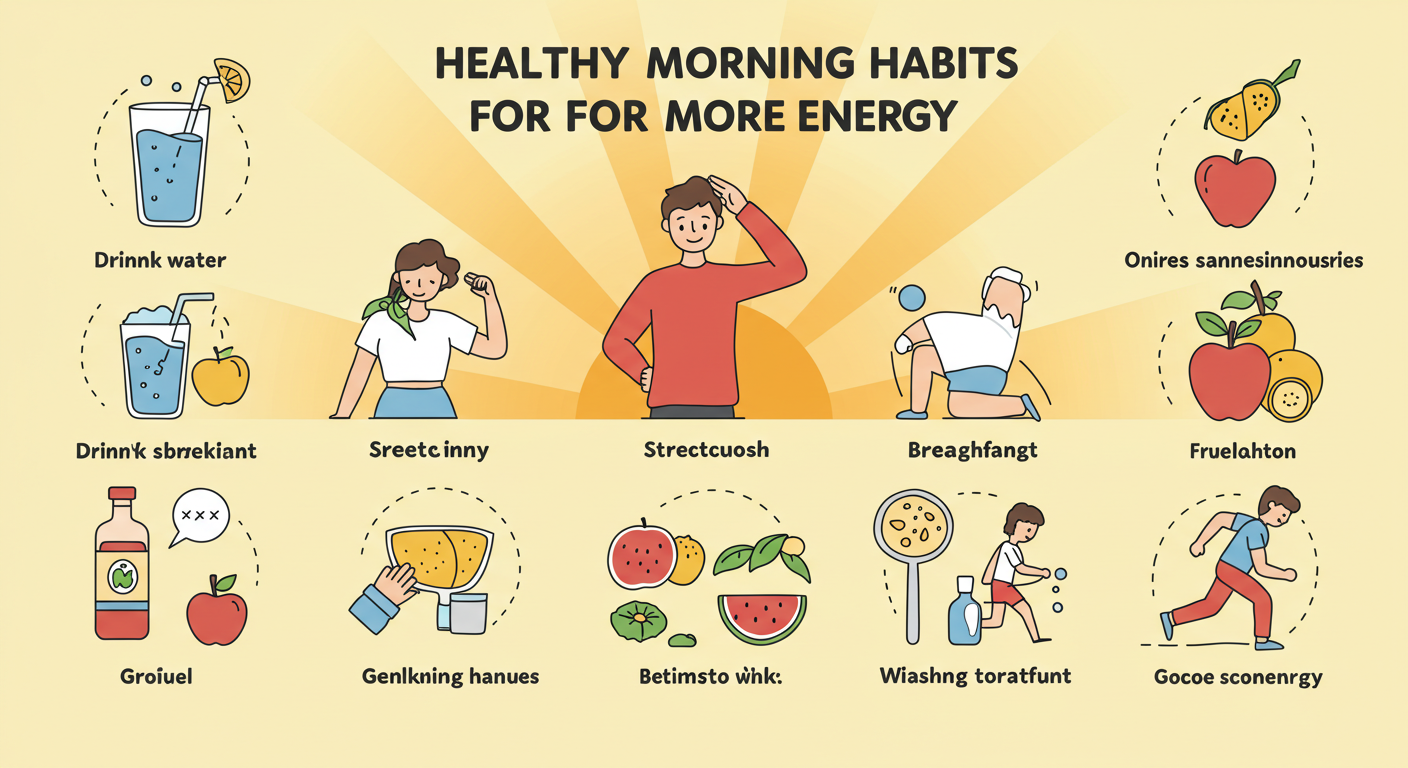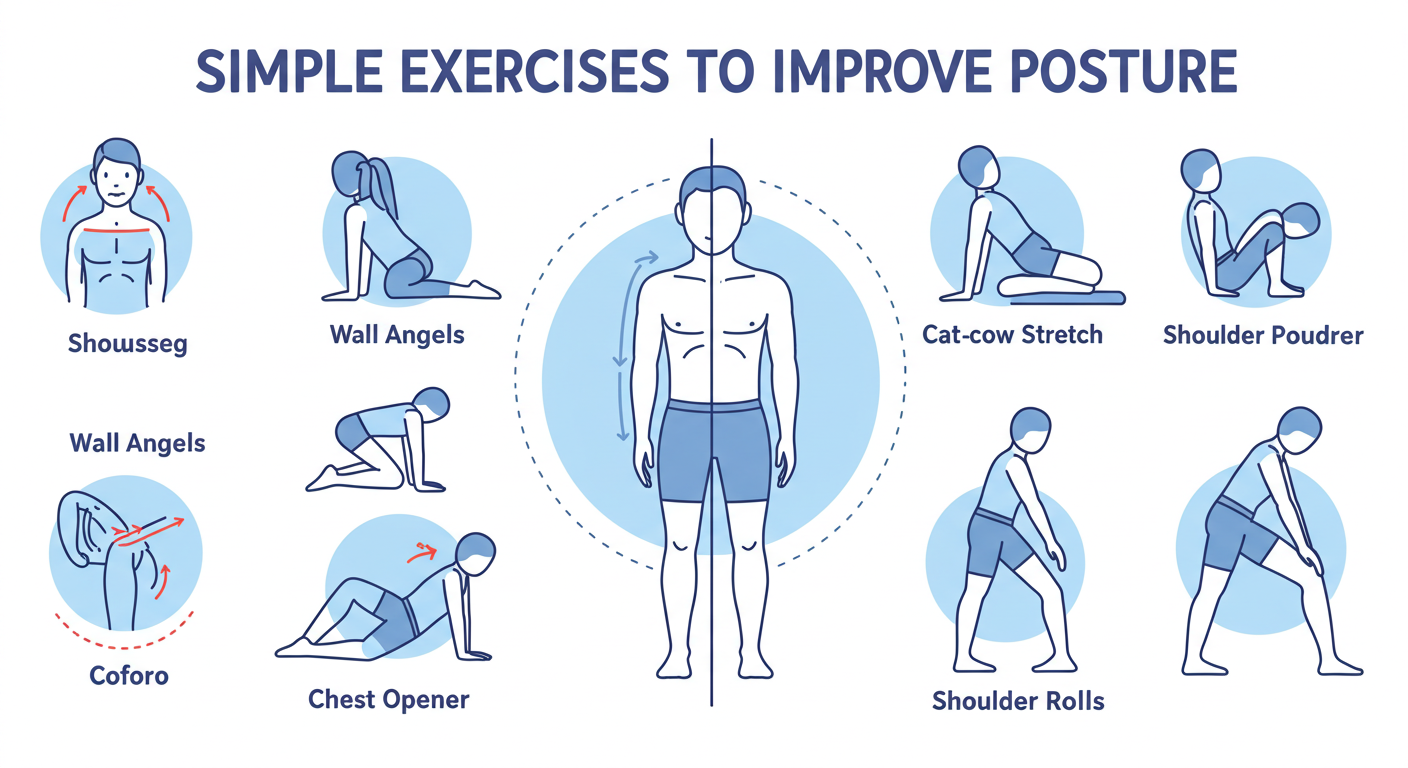Simple Habits That Protect Your Joints Every Day
From my own journey dealing with stiffness and joint discomfort after long hours of working at a desk or reading, I learned how small changes can go a long way. The key is to move often and stay active. Whether you're watching TV, sitting in a chair, or using your computer, changing positions frequently and taking regular breaks can prevent your joints from becoming too stiff. Try to include low-impact exercises in your routine like walking, bicycling, or swimming, even just for 10 minutes a day, which helps to loosen the ligaments and tendons around your joints. A good warm-up is essential before you stretch—never stretch cold muscles. Doing this daily, or at least three times a week, keeps your flexibility in check and supports a healthy range of motion.
Read More: Signs of Vitamin B12 Deficiency
When I gained a bit of weight, I noticed more strain on my knees, hips, and back. Even a small loss of weight reduced the pressure on these joints significantly. According to my doctor, every pound shed relieves up to four pounds of stress on your knees. Also, don’t ignore the importance of strength training. Building stronger muscles gives your joints better support. I worked with a certified trainer and a physical therapist to focus on safe movements—avoiding repetitive motions that could cause injury. Engaging your core, including your abdominal and back muscles, improves balance and helps prevent a fall. I found that Pilates and yoga not only helped my hip strength but were also gentle on my joints.
Another tip that made a difference: be mindful during sports and physical activity. I wear proper padding when doing in-line skating or playing contact sports like tennis or golf. When joints ache, braces can offer the needed stability. If pain or aches persist for more than 48 hours, don’t push through—it could cause damage or worsen RA symptoms. For relief, I apply ice wrapped in a towel for up to 20 minutes; even a bag of frozen vegetables works. Diet also plays a role—eating fish like salmon and mackerel gives you omega-3 fatty acids to reduce inflammation and tenderness. I also take capsules with calcium, vitamin D, and supplements if my diet lacks enough dairy, leafy vegetables like broccoli and kale. And yes, posture matters: stand tall, sit straight, and when you walk, go a bit faster to engage more muscles. Also, when lifting or carrying bags, use your arms, not your hands, to shift the load to larger joints. Don't fall for every supplement at the stores—talk to your doctor about products like glucosamine and SAM-e, which are backed by research for joint health. Remember, protecting your joints early helps prevent cartilage breakdown, future injuries, and reduces long-term stress on your body.
Smart Tips for Stronger Knees as You Get Older
A few years ago, I noticed how simple activities like walking up stairs or picking up an object started to feel different. My knees would ache, and the stiffness would stick around longer. Over time, I learned that paying attention to the signals your body gives is key. I started making small but consistent changes like doing stretching and low-impact exercises — including yoga, swimming, and walking. These not only helped improve my flexibility and strength, but also relieved the pain in my joints. Working with a therapist, I focused on building up my quadriceps, improving posture, and using light resistance tools like bands and weights. My trainer also showed me how to modify movements to avoid repetitive strain or injuries. One important lesson: don’t skip rest when needed — it’s as vital as activity.

One of the biggest changes came when I started to manage my weight more seriously. I was shocked to learn that losing even 10 pounds could reduce up to 40 pounds of pressure from your knees. For those dealing with OA or arthritis, this makes a huge difference. Fat tissue isn’t just stored energy — it produces inflammatory chemicals that can damage cartilage and worsen pain. Adding beans, nuts, yogurt, and fish like tuna and eggs into my meals gave my body the nutrients it needed. I also cut back on sugar, coffee, and alcohol, which can be harmful to both bones and joints. I’ve seen research showing how a healthy diet rich in fruits, vegetables, and lean protein helps reduce inflammation and supports long-term joint health.
Protecting your knees also means being mindful during everyday movements. I always use proper mechanics when lifting — keeping items close to my body, bending at the hips, and avoiding any downward pressure on small joints like wrists. Wearing the right footwear is another thing I used to overlook. Now, I choose supportive, flat, or low-heeled shoes that don’t strain my ankles, knees, or back. For extra support, I’ve tried braces, especially during activities like hiking or long walks. They help distribute force more evenly and prevent damage. Even something like sitting with feet flat and shoulders back can make a difference in joint alignment and reduce stress on your spine.
There was a time when I ignored my pain because I thought it was just part of aging. But learning how to listen to your joints and speak to a doctor when something feels off can save you from more serious problems later. When I experienced swelling once, I followed the RICE method — rest, ice, compression, and elevation using pillows — and it made all the difference. Now, whether it’s using a towel wrapped ice pack after a workout or focusing on posture during long work hours, I treat my joint care like I do brushing my teeth — a daily habit. With good practice, awareness, and consistent effort, it's absolutely possible to maintain strong, healthy joints even as you age.
Understanding Joints in Everyday Life
When I first started teaching health and movement to young students, I realized how little we really understand our own joints — those important connections inside our body that let us run, jump, and even hug our loved ones. That’s why it’s important to bring education around this topic into real life, especially for children in grades 4 to 6. The lesson about joint care isn’t just for classrooms; it’s a valuable part of health that should be mapped to our daily habits.

In many national curriculum models, including those based on science and CDC guidelines, keeping our joints strong and healthy is a key characteristic of long-term well-being. These lessons are mapped to meet standards that inform young learners about the human body and help teachers build meaningful plans. I always make sure the content I share is effective and simple enough for kids who are just starting to learn how their bodies work.
Resources like classroom posters, visual models, and interactive games address not only body mechanics but social and emotional pressures as well — which are often influences on health behaviors. The way we use our bodies is shaped through both knowledge and everyday actions, and by creating characteristics of good habits, we make lasting change.
So whether you’re reading this page as a teacher, parent, or learner, remember: learning about joints is not just a one-time lesson, but a step toward building lifelong awareness in health. These important basics are meant for everyone and can truly shape the way we move through life.
How to Keep Your Joints Healthy
When I first started working with patients dealing with arthritis, I realized how small modifications in everyday life can bring big relief from joint pain and stiffness. From adjusting your daily activities to being mindful of your body’s position while sitting at a desk or watching television, every movement matters. Taking short stretch breaks every few minutes, even at home while reading, can ease pressure on your joints and prevent stress from building up.

Working with physical and occupational therapists has shown me how tools like adaptive aids, labor-saving devices, or wall-mounted jar openers can simplify tasks and reduce strain. For example, if your hands are sore, use a cloth or your palm to open a tight lid or purchase kitchen openers with better grips. These small changes are especially helpful for those experiencing throbbing in the shoulders, hips, knees, or ankles. Even spray-on mildew remover in showers and tubs, or automatic toilet bowl cleaners, can make routine chores easier.
Staying active is another way to build strength and maintain healing. Whether you walk in the park, do a low-impact workout, or play a round of golf, consistent movement keeps you independent in later years. Use your strongest muscles to push open heavy doors or to carry groceries, and take the stairs one leg at a time using the side arm rail for support. Even gentle activities like climbing out of a bed with the help of a stool, or choosing household supplies stored within easy reach, can make a big difference.
Read More: The Kidney Cancer
If you're managing limitations or have specific concerns, always consult a doctor about proper medications and treatments. You can also educate your family and friends so they can offer the right help and encouragement. I often recommend organizing your storage areas, using duplicate items in bathrooms and kitchens, and planning ahead to simplify your life. From bending to stooping, even reaching overhead can be adjusted with thoughtful modifications like casters on furniture or raising bed height. Little by little, these changes help reduce discomfort and keep you moving with ease.
Power Foods to Support Joint Strength
As someone who has guided many through joint-related concerns, I’ve seen how a diet rich in the right nutrients can make a real difference in joint health. Certain foods are packed with anti-inflammatory and healing properties that help reduce inflammation, relieve pain, and even preserve bone density and connective tissue. For instance, coldwater fish like salmon, tuna, trout, and halibut are excellent sources of omega-3 fatty acids. These acids don’t just support your heart and help with diabetes, but they also help counter inflammatory response linked to arthritis—whether it's rheumatoid, osteoarthritis, or minor injuries.

To build strength from within, add more nuts and seeds to your daily meals. I often recommend a handful of almonds, walnuts, chia, flax, or pine nuts for snacking or sprinkling over salad. They are full of healthy fats, protein, and fiber, all of which support tissue repair. Swap refined grains for whole ones like barley, oats, rye, and wheat, which provide sustained energy and help manage sugar levels—an essential part of avoiding inflammation and weight gain that can put strain on the knee, ankle, or other joints.
Colorful vegetables offer even more protection. Bright options like broccoli, brussels sprouts, cauliflower, and other cruciferous veggies are known to block enzymes that lead to swelling and joint deterioration. Likewise, pineapple provides bromelain, a natural enzyme that can help treat symptoms of joint discomfort. Don’t forget blueberries, rich in antioxidants, flavonoids, and anthocyanins, which act as natural remedies to reduce overall stress on the body. I also encourage using garlic, onions, turmeric, and ginger in daily cooking to enhance flavor while boosting healing effects.
While there’s no single fix for joint problems, what you eat has a major impact. Chickpeas, soybeans, pinto, black beans, and lentils are loaded with minerals, vitamins, and plant-based protein, making them a powerful choice in patient treatment plans. Just remember to enjoy treats like dark chocolate or cocoa in moderation and to avoid processed, fried, or saturated fats, which can trigger omega-6 imbalance and worsen issues. When in doubt, consult with Valley Orthopaedic Specialists or a locator for a patient-specific appointment and expert care. Take charge of your health—starting with your next meals—and give your joints the support they need today.








